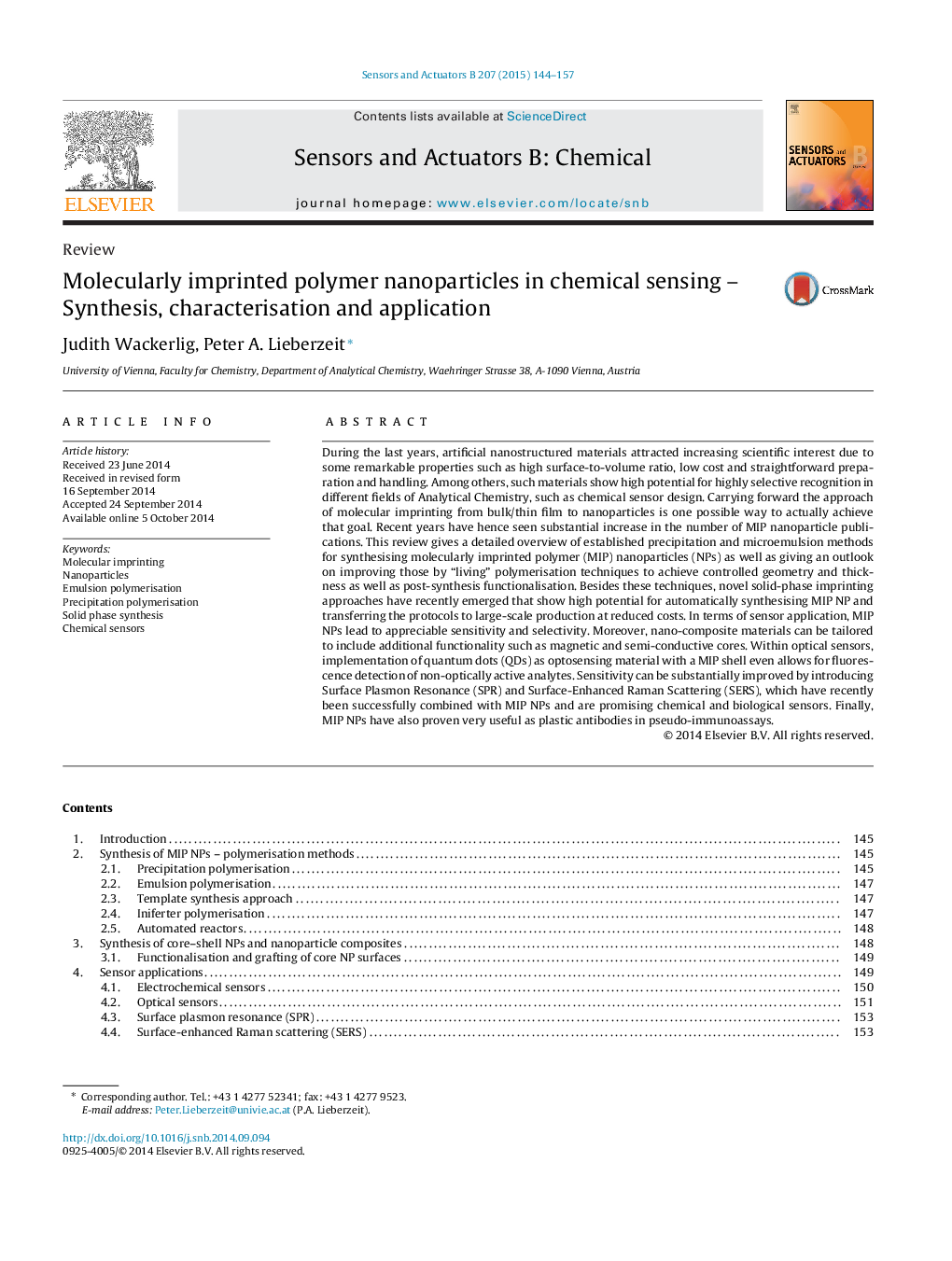| Article ID | Journal | Published Year | Pages | File Type |
|---|---|---|---|---|
| 10412702 | Sensors and Actuators B: Chemical | 2015 | 14 Pages |
Abstract
During the last years, artificial nanostructured materials attracted increasing scientific interest due to some remarkable properties such as high surface-to-volume ratio, low cost and straightforward preparation and handling. Among others, such materials show high potential for highly selective recognition in different fields of Analytical Chemistry, such as chemical sensor design. Carrying forward the approach of molecular imprinting from bulk/thin film to nanoparticles is one possible way to actually achieve that goal. Recent years have hence seen substantial increase in the number of MIP nanoparticle publications. This review gives a detailed overview of established precipitation and microemulsion methods for synthesising molecularly imprinted polymer (MIP) nanoparticles (NPs) as well as giving an outlook on improving those by “living” polymerisation techniques to achieve controlled geometry and thickness as well as post-synthesis functionalisation. Besides these techniques, novel solid-phase imprinting approaches have recently emerged that show high potential for automatically synthesising MIP NP and transferring the protocols to large-scale production at reduced costs. In terms of sensor application, MIP NPs lead to appreciable sensitivity and selectivity. Moreover, nano-composite materials can be tailored to include additional functionality such as magnetic and semi-conductive cores. Within optical sensors, implementation of quantum dots (QDs) as optosensing material with a MIP shell even allows for fluorescence detection of non-optically active analytes. Sensitivity can be substantially improved by introducing Surface Plasmon Resonance (SPR) and Surface-Enhanced Raman Scattering (SERS), which have recently been successfully combined with MIP NPs and are promising chemical and biological sensors. Finally, MIP NPs have also proven very useful as plastic antibodies in pseudo-immunoassays.
Keywords
Related Topics
Physical Sciences and Engineering
Chemistry
Analytical Chemistry
Authors
Judith Wackerlig, Peter A. Lieberzeit,
